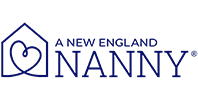Home safety is an important concern year-round, but with summer around the corner, more children will be running around both inside and outside the home. One way to make things easier on your nanny or other caregiver is to make your home – your nanny’s workplace – a healthy and safe environment.
OSHA Home Safety Regulations
The Occupational Safety and Health Act (OSHA) ensures that employers provide employees with a workplace that is free from recognized hazards that cause or could cause serious harm or death to employees. It is applicable to everyone except sole proprietors and those employing family members in a business or on a farm. Under OSHA, employers must:
- provide safety training to employees
- inform employees about hazardous chemicals to which they may be exposed
- notify regulators about workplace accidents
A good practice is to keep a written safety policy in your employee handbook, which could offer instructions on where the house’s first aid kit is kept, a list of emergency service telephone numbers, protective gear required for specific tasks, and an employee requirement to report all health and safety issues immediately to the employer.
Home Safety Procedures
It is wise to familiarize your nanny with any home emergency procedures (such as fire) and provide a list of medical personnel for each family member, especially if there is a child with special needs or a senior with specific medical issues. All homes should have a family fire escape plan that you should review with your nanny, as well as your family, on a regular basis. See www.firesafety.gov for advice on fire safety. If you live in a state where there are hurricanes, tornadoes, or earthquakes, your nanny should be informed of any special procedures.
Emergency Contacts
A new nanny in the home should be given a list of emergency contacts; this should be easily located in the house for everyone to see. The nanny should keep a copy with her at all times (or save the numbers in her cell phone contacts) when leaving the house with the children. The list of emergency contacts should include:
- Parents’ home, work, and cell phone numbers, and work addresses/email addresses;
- Friendly, helpful neighbors’ home, work, and cell numbers, and home addresses;
- Relatives’ home, work, and cell numbers;
- The local Poison Control Center;
- 911 in your area and whether the 911 procedures are different for the employee’s cell phone or any digital and line numbers that are not in the 911 system;
- Pediatrician, dentist and any other medical specialist that is required for the family member who is being cared for;
- The local hospital number;
- School main office and school nurse numbers if any of the children are at school;
- List of children’s school friends’ home numbers, if appropriate.
Home Safety Checklist Download
Prevention is the best policy for ensuring your home workplace is a healthy and safe environment. Download our Home Safety Checklist to help you, your children, and your nanny stay safe.

